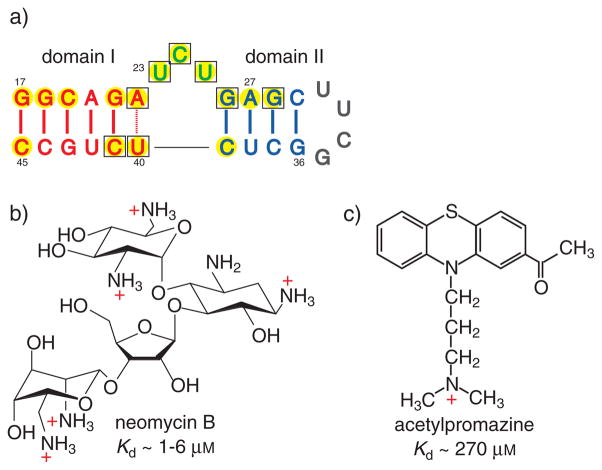Figure 1.
a) Secondary structure of TAR (transactivation response element) RNA in which the wild-type loop is replaced by a UUCG counterpart. The highlighted residues undergo Δδ>0.1 ppm changes in 1H NMR chemical shifts upon binding to neomycin B (yellow) and acetylpromazine (□). b,c) Structures and TAR-dissociation constants (Kd) for neomycin B (b; NeoB)[9, 11] and acetylpromazine (c; AcP).[14]

